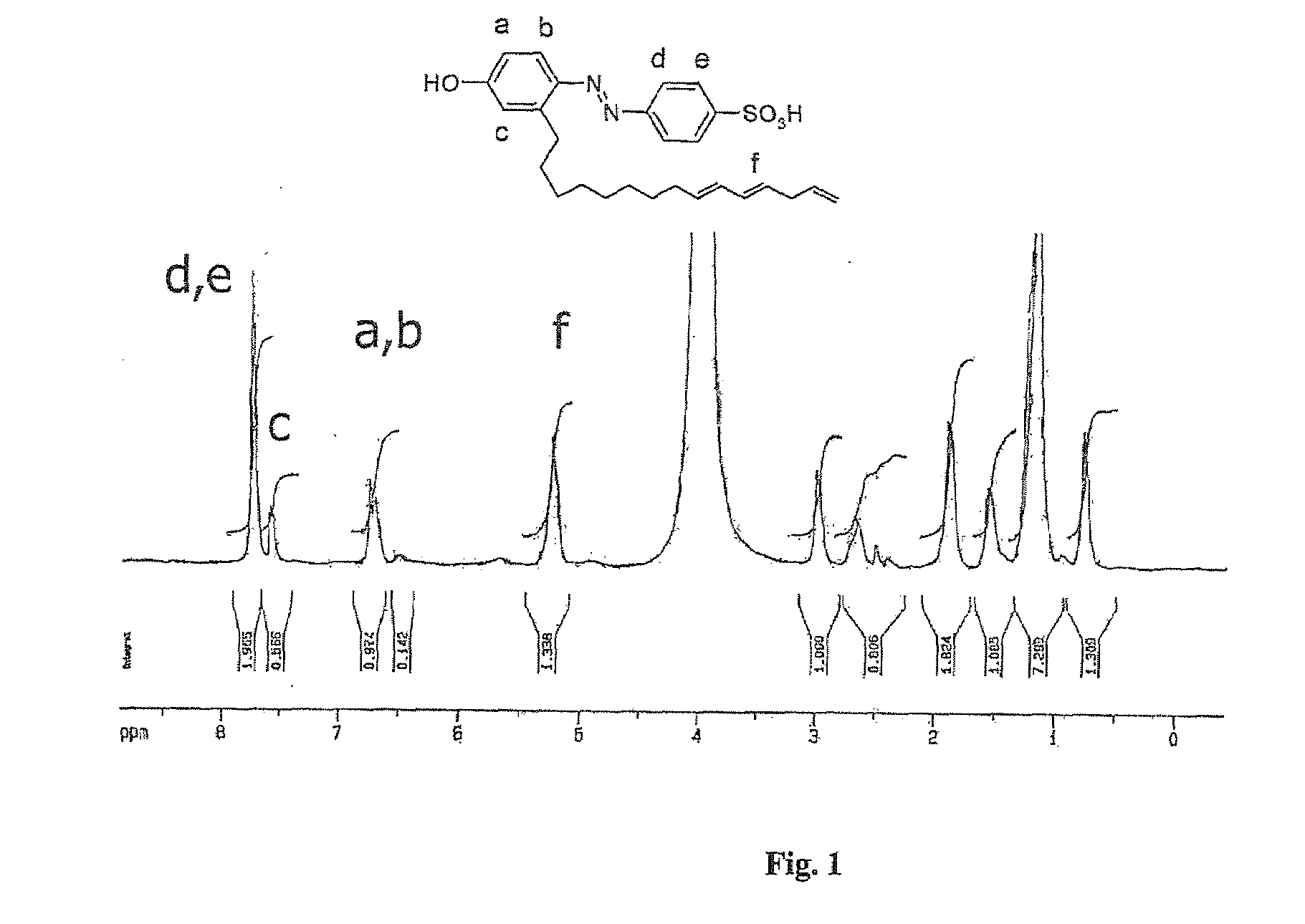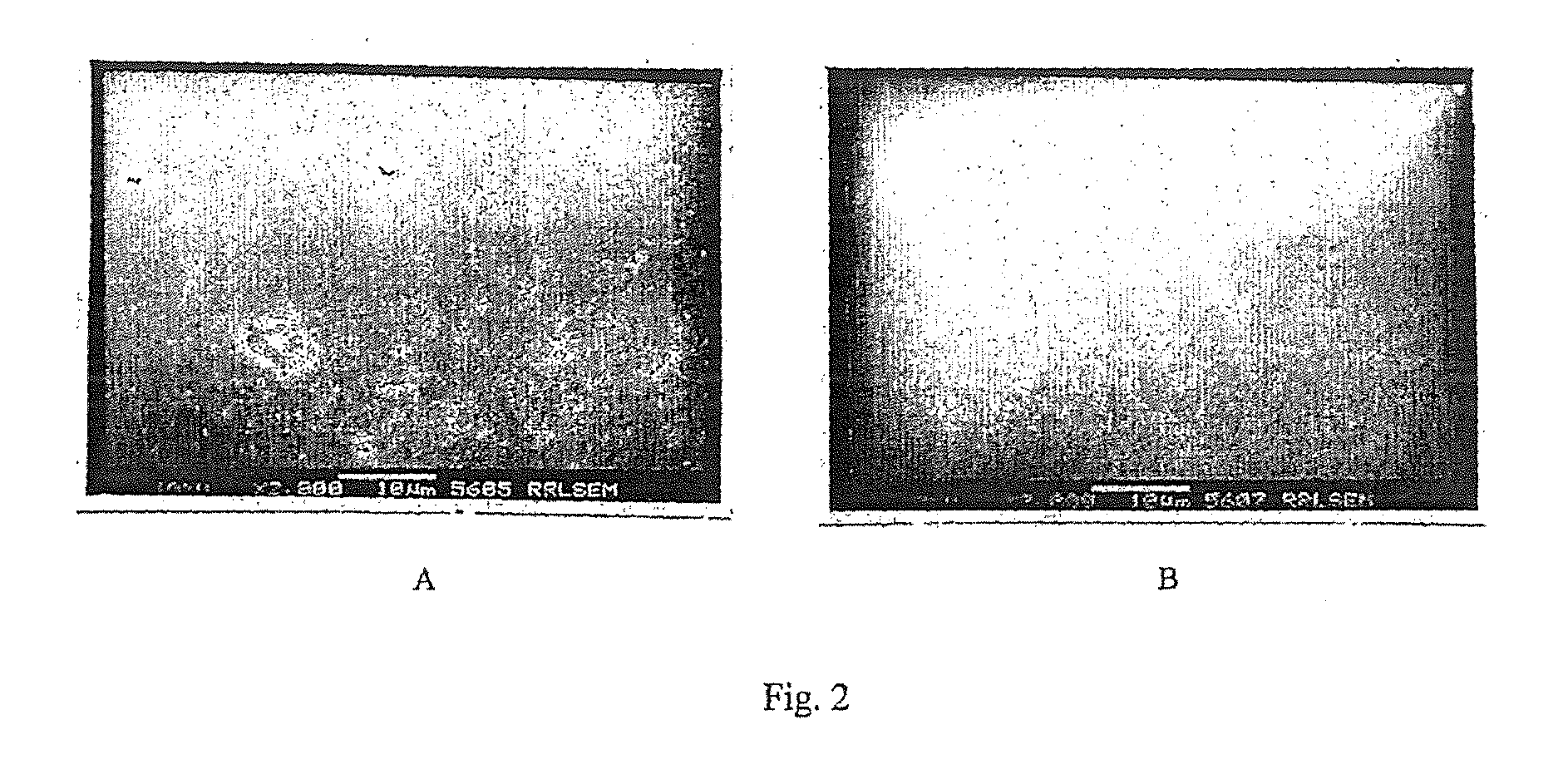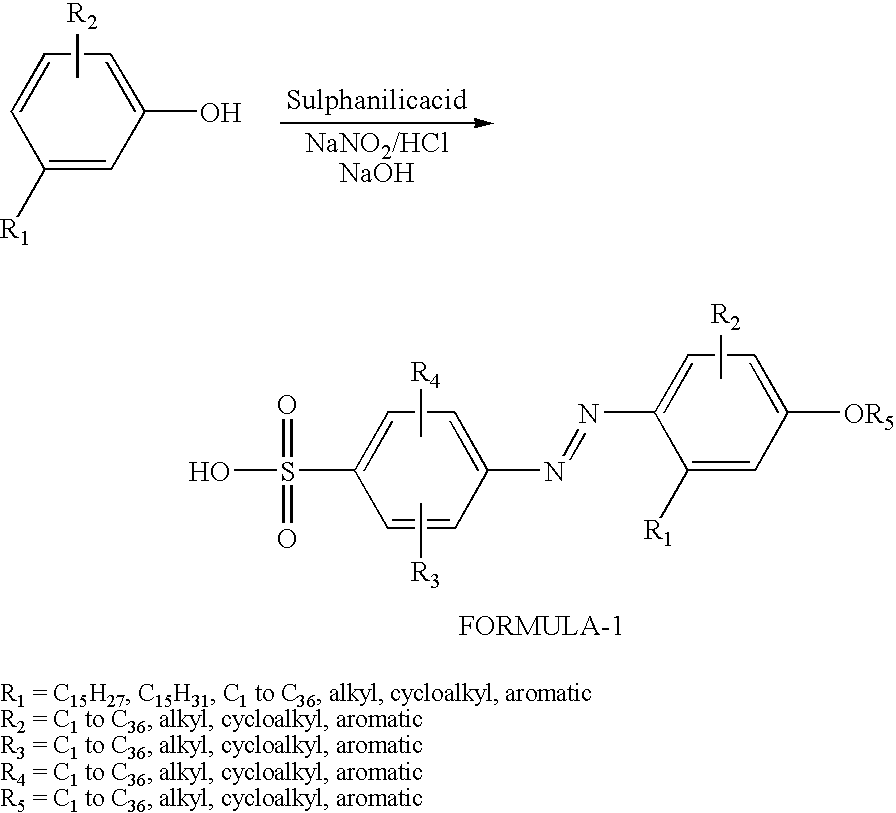Functionalised dopants and conducting polyaniline materials, blends and process therefor
a polyaniline material and polymer technology, applied in the direction of non-metal conductors, conductors, organic chemistry, etc., can solve the problems of poor processability, inability to use chlorosulfuric acids, and inability to aromatic ring sulfonation of cardanol using sulphuric acid or chlorosulfuric acid
- Summary
- Abstract
- Description
- Claims
- Application Information
AI Technical Summary
Benefits of technology
Problems solved by technology
Method used
Image
Examples
example 1
[0033]Synthesis of Cardanol azo sulfonic acid (dopant 1): Sulphanilic acid (31.5 g, 0.18 mol) and sodium carbonate (7.95 g, 0.08 mol) were added into 300 ml of water and heated to 60-70° C. to dissolve the entire solid. It was further cooled to 5° C. and a cold solution of sodium nitrite (11.1 g, 0.16 mol) in water (32 ml) was added. The resultant yellow solution was poured into ice (200 g) containing conc. HCl (31.5 ml) and stirred using mechanical stirrer for 30 min at 5° C. It was added into a flask containing sodium hydroxide (18 g, 0.45 mol), distilled cardanol (45 ml, 0.15 mol), methanol (75 ml) and water (150 mL). The coupling reaction was continued with stirring for 3 h in the ice-cold condition using a mechanical stirrer. The reaction mixture was neutralized by addition of conc. HCl (150 ml) in crushed ice (300 g). The red precipitate was filtered using Buckner funnel and washed with water. The dried product weighed 64.18 g (88% yield). Melting point: 205-207° C. 1H-NMR (in...
example 2
[0034]Doping of polyaniline emeraldine base with dopant 1 in organic solvents: Aniline (10 mL, 0.11 mol) was dissolved in HCl (1M, 200 mL) and taken in a 1000 mL three neck flask and cooled to 0° C. using ice. To this a pre-cooled solution of ammonium per sulphate (31.4 g, 0.138 mol) in HCl (1M, 100 mL) was added very carefully (exothermic reaction) in five portions in an interval of 5 minutes gap. Immediate appearance of pink colour was observed, which further turned into deep blue. After 5 minutes, green colored polyaniline-HCl emeralidine base precipitated from the solution. The polymerization was further proceeded by stirring at 30° C. for 24 h. The precipitate was filtered, washed with 1M HCl three times and added into a 1000 mL flask containing 1 M aqueous ammonia solution (450 mL, 25% solution in water). The blue precipitate was stirred for 3 h at room temperature to ensure the completion of dedoping. The resultant blue emeraldine base was filtered, washed successively with w...
example 3
[0035]Emulsion polymerization of aniline in presence of dopant 1: Cardanol azo sulfonic acid (24.2 g, 0.05 mol) and aniline (4.8 ml, 0.05 mol) were taken in water (50 mL) and vigorously stirred for 10 min. Then toluene (50 mL) and water (50 mL) were added and stirred for 2 hr. The resultant solution was cooled to 0° C. using ice. Ammonium persulfate (14.28 g, 0.063 mol) was dissolved in water (25 mL) and cooled. It was then added into the reaction mixture with constant stirring. After 15 min green tinge appeared on the sides of the flask. The polymerization was continued by vigorous stirring at 30° C. for 24 h. The green precipitate was filtered and washed successively with water, methanol and acetone. The green colored doped material was dried in vacuum oven at 50° C. (1 mm of Hg) for 8 h. The compositions of cardanol azo sulfonic acid (formula 1) and aniline were varied in the feed from 1 to 99 mole or weight % to prepare polyaniline doped conducting materials. The emulsion polyme...
PUM
| Property | Measurement | Unit |
|---|---|---|
| conductivity | aaaaa | aaaaa |
| particle size | aaaaa | aaaaa |
| thickness | aaaaa | aaaaa |
Abstract
Description
Claims
Application Information
 Login to View More
Login to View More - R&D
- Intellectual Property
- Life Sciences
- Materials
- Tech Scout
- Unparalleled Data Quality
- Higher Quality Content
- 60% Fewer Hallucinations
Browse by: Latest US Patents, China's latest patents, Technical Efficacy Thesaurus, Application Domain, Technology Topic, Popular Technical Reports.
© 2025 PatSnap. All rights reserved.Legal|Privacy policy|Modern Slavery Act Transparency Statement|Sitemap|About US| Contact US: help@patsnap.com



